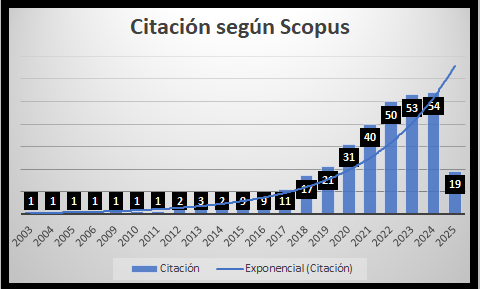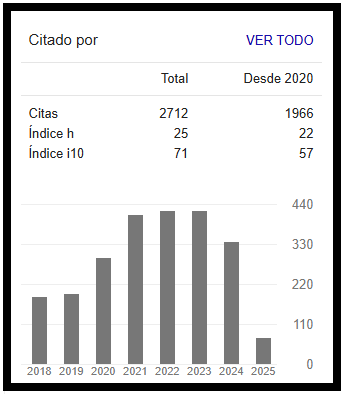Towards a state-of-the-art of the current researches on disinformation / misinformation
DOI:
https://doi.org/10.24265/cian.2013.n3.14Keywords:
Disinformation / Misinformation, Manipulation, Public Opinion, Social Communications, Journalism, Mass CommunicationAbstract
The concepts of disinformation and misinformation have almost as many meanings as the number of authors who have treated them. Considered from the semiotic and psychological point of view, disinformation and misinformation seem to be the result of the inadequacy of what is communicated to the reality of an object. The focus of both Political Science and Public Relations is set on disinformation / misinformation as an example of how masses and public opinion can be manipulated, while the vision of Communication Sciences and Information considers such behaviours as natural features of the media in a clearly oversaturated communications ecosystem. This paper describes the different approaches to the topic of disinformation/misinformation made in the above mentioned scientific disciplines.
Metrics
Downloads
References
Adorno, T. y Horkeimer, M. (1994). La dialéctica de la ilustración. Madrid: Trotta.
Arráez, R. (1998). “La comunicación para el desarrollo. Su aplicación para el medio radio”. Extraída el 25/VII/2013 desde http://www.ull.es/publicaciones/latina/a/40rosa.htm
Bednard, P. y Welch, C. (2008). Bias, Misinformation and the Paradox of Neutrality. Portsmouth: University of Portsmouth.
Bernays, E.
_(1928). Propaganda. Nueva York: Horace Liveright.
_(1923). Crystallizing Public Opinion. Nueva York: Kessinger Publishing.
Brajnovic, L. (1991). El ámbito científico de la información. Navarra: EUNSA.
Buckland, M. (1991). “Information as thing”. Journal of American Society of Information Science, vol. 42, núm. 5, pp. 351-360.
Butterfield, H. (1931). “The Whig Interpretation of History”. Extraída el 4/V/2013 desde http://www.eliohs.unifi.it/testi/900/butterfield/chap_2.html
Canevas, S. (2006). La Désinformation: Tous Responsables! Actes du 5éme colloque de Passy. Lorient: Editions Fauxtroll.
Catalán, M. (2009). “Introducción”, pp. 9-31. En Condorcet, M. ¿Es conveniente engañar al pueblo? Extraída el 4/V/2013 desde http://www.sequitur.es/wp-content/uploads/2010/09/es-conveniente-enganar-al-pueblo.pdf
Chomsky, N. y Herman, E. (1990). Los guardianes de la libertad. Barcelona: Grijalbo.
De Bustos, M. (1993). Los grupos multimedia: Estructuras y estrategias en los medios europeos. Barcelona: Bosch.
De Echave-Sustaeta, J. (1992). La Eneida [Traducción]. Madrid: Gredos.
“Diccionario de la Lengua Rusa Ozhegov” (1949). Extraída el 9/X/2012 desde http://www.vedu.ru/ExpDic/6659
Doob, L. (1950) “Goebbels’ Principles of Propaganda”. The Public Opinion Quarterly, vol. 14, núm. 3, pp. 419-442.
DPProgram (2010). “Disinformation Tactics: The Methods Used to Keep you in the Dark”. Extraída el 5/V/2013 desde http://dprogram.net/2010/02/08/disinformation-tactics-the-methods-used-to-keep-you-in-the-dark/
Dretske, F. (1981). Sensation and Perception. Cambridge: MIT Press.
Durandín, G. (1995). La desinformación, la información y la realidad. Madrid: Paidós.
Estados Unidos de América, Departamento de Estado.
_(1986). A report on the Substance and Process of Anti-US. Disinformation and Propaganda Campaings.
_(1981). Reporte Especial Número 88. Soviet Active Measures: Forgery, Missinformation, Political Operations.
Fallis, D.
_(2011). “Floridi on Disinformation”. Etica e Politica, vol. XIII, núm. 2, pp. 201-214.
_(2009). A Conceptual Analysis of Disinformation. Arizona: University of Arizona.
Fallet, L. (2001). La désinformation: mal incontorunable des médias? París: Mémoire de Communication.
Floridi, L.
_(2011). The Philosophy of Information. Oxford: Oxford University Press.
_(2005). “Semantic Conceptions of Information”. Extraída el 5/XI/2012 desde http://plato.stanford.edu/entries/information-semantic/
_(1996). “The internet as a Disinformation Superhighway?” Extraída el 5/XI/2012 desde http://www.philosophyofinformation.net/publications/pdf/bnw.pdf
Foucault, M.
_(1989). Las palabras y las cosas: Una arqueología de las ciencias humanas. París: Gallimard.
_(1982). Vigilar y Castigar. Madrid: Siglo XXI.
Fox, C. (1983). Information and Misinformation: An investigation of the notions of information, misinformation, informing and misinforming. Westport: Greenwood.
Fraguas de Pablo, M. (1985). Teoría de la desinformación. Madrid: Alhambra.
Frické, M. (1997). “What are the advantages of hyperproof-Like reasoning systems?” British Journal for the Philosophy of Science, vol. 48, núm. 3, pp. 397-410.
Gackowski, Z. (2006). Quality of Informing: Bias and Disinformation Philosophical Background and Roots. Los Ángeles: Issues in Informing Science and Information Technology.
Galdón, G. (2006). Desinformación: Métodos, aspectos y soluciones. Pamplona: EUNSA.
García, J.
_(2009). “La desinformación”, pp. 327-346. En Herrero, J. (ed.). Manual de teoría de la información y de la comunicación. Madrid: Universitas.
_(2004). El Príncipe, de Maquiavelo. Madrid: Síntesis.
Gergen, K. (1992). El yo saturado: Dilemas de identidad en el mundo contemporáneo. Madrid: Paidós.
Grice, P. (1989). Studies in the way of words. Boston: Harvard University Press.
Grupo de Aprendizaje Colectivo (n. d.). “Técnicas de Desinformación, manual para la lectura crítica de la prensa”. Extraída el 5/I/2013 desde http://pensamiento.kinoki.org/contrainformacion/manual/desinforma-cion.-htm
Habermas, J. (1981). Teoría de la Acción Comunicativa. Madrid: Taurus.
Hernón, P. (1995). “Disinformation and Misinformation through the Internet: Findings of an exploratory study”. Government Information Quarterly, vol. 12, pp. 133-139.
Herrero, J. (coord.) (2009). Manual de Teoría de la Información y de la Comunicación. Madrid: Universitas.
Isralson, O. (1988). Vive la Désinformation, French Style. Boston: College of Communication.
Jacquard, R. (1988). La Desinformación: Una manipulación del poder. Madrid: Espasa.
Karlova, N. y Fisher, K. (2012). “Plz RT: A Social Diffusion Model of Disinformation and Misinformation for Understanding Human Information Behaviour”. Proceedings of the ISIC2012, pp. 1-17. Extraída el 25/VII/2013 desde http://www.academia.edu/1981610/_Plz_RT_A_social_-diffusion_model_of_misinformation_and_disinformation_for_unders-tanding_human_information_behaviour
Karlova, N. y Lee, J. (2011). “Notes from the Underground City of Disinformation: A conceptual investigation”. Extraída el 25/VII/2013 desde http://www.academia.edu/1065634/Notes_from_the_Underground_City-_of_Disinformation_A_Conceptual_Investigation
Klumpp, J. (1997). Freedom and Responsibility in Constructing Public Life: Toward a Revised Ethic of Discurse [Symponsium on Academic Knowledge and Political Power at University of Maryland]. Netherlands: Kluwer Academic Publishers.
Lasswell, H. (1971). Propaganda technique in the World War. Boston: MIT Press.
Lee, K. (2004). “Age, Neuropsychological and Social Cognitive measures as predictors of individual differences in susceptibility to the Misinformation Effect”. Applied Cognitive Psychology, vol. 18, núm. 8, pp. 997-1019. Extraída el 20/IV/2013 desde http://onlinelibrary.wiley.com/doi/10.1002/acp.1075/abstract;jsessionid=8F2BEEFC299440D4517BC424-B1B6B433.d02t03
Lenin, V. (1902). “¿Qué Hacer? Problemas candentes de nuestro movimiento”. Extraída el 5/XI/2012 desde http://www.marxists.org/espanol/lenin/obras/1900s/quehacer/index.htm
Loftus, E. (2005). “Planting disinformation in the human mind: A 30-year investigation of the malleability of memory”. Learning and Memory, vol. 12, núm. 4, pp. 361-366. Extraída el 20/IV/2013 desde http://learnmem.cshlp.org/content/12/4/361.full.pdf+html
Loftus, E. y Hoffman, H. (1989). “Misinformation and memory: The creation of memory”. Journal Experimental Psychology, vol. 118, núm. 1, pp. 100-104. Extraída el 25/VII/2013 desde http://faculty.washington.edu/eloftus/Articles/hoff.htm
López, A. (2004). “La desinformación en la aldea global como forma de conocimiento”. Ágora Revista de Ciencias Sociales, núm. 10, pp. 19-30.
Marcuse, H. (1964). El hombre unidimensional. México D. F.: Ariel.
Martínez, J. (1987, diciembre 17 y 22). “Desinformar”. Revista Ya.
Mas de Xáxas, X. (2005). Mentiras: Viaje de un periodista a la desinformación. Barcelona: Destino.
McLuhan, M. (2003). Understanding the Media: The Extensions of Man. California: Gingko Press.
Montero, M. (1993). La información periodística y su influencia social. Barcelona: Universidad Autónoma de Barcelona.
Moragas, S. (1985). Sociología de la Comunicación. Barcelona: Gustavo Gili.
Muñoz, A. (1989). Política y nueva comunicación. El impacto de los medios en la vida política. Madrid: Fundesco.
Noelle-Neumann, E. (1995). La espiral del silencio. Opinión Pública: Nuestra piel social. Barcelona: Paidós.
O’Brien, T. (1989). Russian Roulette: Disinformation in the U.S Govenrment and News Media. South Carolina: University of South Carolina.
Ortega, F. (2006). Periodismo sin información. Madrid: Tecnos.
Pabón, J. (2006). La Odisea [Traducción]. Madrid: Gredos.
Ramírez, L. (2006). El arte de la guerra de Sunzi [Traducción]. Madrid: La Esfera de los Libros.
Real Academia Española (2001). Diccionario de la Real Academia Española (22ª Edición). Madrid: Espasa.
Rivas Troitiño, J.
_(2001). Desinformación y Terrorismo: Análisis de las conversaciones entre el gobierno y ETA en Argel (enero-abril 1989) en tres diarios de Madrid [Tesis doctoral]. Madrid: Universidad Complutense de Madrid, Facultad de Ciencias de la Información.
_(1995). “Desinformación: Revisión de su significado. Del engaño a la falta de rigor”. Estudios sobre el mensaje periodístico, núm 2, pp. 75-83.
Rizo, M. (2009). La comunicación: ¿Ciencia u objeto de estudio? México D. F.: UNAM.
Roberts, A. (2005). “Spin control and freedom of information: Lessons for the United Kingdom from Canada”. Extraída el 1/V/2013 desde http://onlinelibrary.wiley.com/doi/10.1111/j.00333298.2005.00435.x/abstract;jsessionid=8D74D5223C6BD65CD55608F4428B96F3.d01t03
Rodrigo, M.
_(2001). Teoría de la comunicación: Ámbitos, métodos y perspectivas. Barcelona: Bellaterra.
_(1995). Los modelos de comunicación. Madrid: Tecnos.
Romero, L.
_(2012a). Aplicabilidad de técnicas de desinformación en la gestión comunicacional de crisis. Estudio de caso: BFA-Bankia [Trabajo final de Maestría]. Almería: Universidad de Almería, Facultad de Humanidades. Extraída el 25/VII/2013 desde http://www.academia.edu/2087620/Aplicabilidad_de_Tecnicas_de_Desinformacion_en_-la_Gestion_Comuni-cacional_de_la_Crisis._Estudio_de_Caso_BFA-Bankia
_(2012b). “La desinformación en la Nueva Aldea Global”. Revista Estudios Venezolanos de la Comunicación, núm. 159-160, pp. 52-55.
_(2011). “La manipulación informativa y la desinformación: La anomia de los receptores y el fomento de las víctimas propiciatorias”. Extraída el 20/IV/2013 desde http://www.academia.edu/1200126/La_manipulacion_-informativa_y_la_desinformacion_La_anomia_de_los_receptores_y_el_-fomento_de_victimas_propiciatorias
Rubido, S. y otros (2009). Medios de Comunicación y Manipulación: Propuestas para una comunicación democrática. Madrid: Universidad Nacional de Educación a Distancia.
Saariluoma, P. y Maksimainen, J. (2012). “Intentional Disinformation and Freedom of Expression”. International Review of Social Sciences and Humanities, vol. 3, núm. 2, pp. 9-20.
Sampedro, J. (2001). El mercado y la globalización. Barcelona: Destino.
Saunders, J. y MacLeod, M. (2002). “New evidence on the suggestibility of memory: the role of retrieval-induced forgetting in misinformation effects”. Journal of Experimental Psychology, vol. 8, núm. 2, pp. 127-142.
Schiller, H.
_(1987). Los manipuladores de cerebros. Barcelona: Gedisa.
_(1973). Mind Managers. Boston: Beacon Press.
_(1969). Mass Communication and American Empire. Boston: Beacon Press.
Searle, J. (1997). The Construction of Social Reality. Nueva York: The Free Press.
Shultz, R. y Godson, R. (1984). Dezinformatsia: Active measures in Soviet Strategy. Washington: Pergamon.
Stahl, B. (2006). “On the difference or equality of information, disinformation and disinformation: A critical research perspective”. Informing Science Journal, vol. 9, pp. 83-96.
Stauber, J. y Rampton, S. (2001). “Trust us, We’re experts: How industry manipulates science and gambles with your future”. Los Ángeles: Tarcher-Penguin.
Sweeny, M. (1997). “Twenty-Five ways to supress the truth: The rules of disinformation”. Extraída el 03/II/2013 desde http://www.whale.to/m/disin.html
Timsit, S. (2010). “Les dix stratégies de manipulation de masses”. Extraída el 15/II/2013 desde http://www.pressenza.com/fr/2010/09/les-dix-strategies-de-manipulation-de-masses/
Van Dijk, T. (2006). “Discurso y manipulación: discusión teórica y algunas aplicaciones”. Revista Signos, vol. 39, núm. 60, pp. 49-74.
Watzlawick, P. (1979). ¿Es real la realidad? Confusión, desinformación, comunicación. Barcelona: Herder
Downloads
Published
Issue
Section
Categories
License
Copyright (c) 2013 Luis Romero Rodríguez

This work is licensed under a Creative Commons Attribution 4.0 International License.
In case the manuscript is approved, the authors retain the copyright and assign to the journal the right to publish, edit, reproduce, distribute, display and communicate in the country of origin and abroad by means of print and electronic media in different databases.
In order for this procedure to be recorded, the author must fill out the following formats:
Format 1 - Author data Format.
Format 2 - Affidavit on originality and authorization for the publication of articles Format.
Format 3 - Open Science Compliance.








2.png)


















